Hugh Jackman The Wolverine Interview
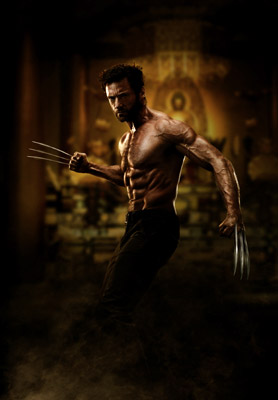
Hugh Jackman The Wolverine Interview
Cast: Hugh Jackman, Famke Janssen, Will Yun Lee
Director: James Mangold
Genre: Action, Adventure, Fantasy
Rated: M
Running Time: 126 minutes
Synopsis: The most iconic character in the X-Men universe embarks upon on an epic journey in modern-day Japan in The Wolverine. Inspired by the celebrated Marvel comic book arc, Logan (Hugh Jackman), the century-old mutant known to the world as Wolverine, is lured to a Japan he hasn't seen since World War II – and into a shadowy realm of Yakuza and Samurai.
Suddenly finding himself on the run with a mysterious, beautiful heiress and confronted for the first time with the prospect of true mortality, Logan will be pushed to the physical and emotional edge – further than he's ever been. On a perilous journey to rediscover the hero inside, Logan will be forced to grapple not only with powerful foes, mutant and human alike, but with the ghosts of his own haunted past, as well. As The Wolverine crosses his adamantium claws with Samurai swords, striking out through a maze of love, betrayal and honour, he will truly come to know the price of a life without end.
'This story takes The Wolverine into a world that is vastly different from any seen before in the X-Men series," says Hugh Jackman, who also serves as a producer on the film. 'It's visually different and the tone is different. There are a lot of battles in this story, but the greatest battle of all is the one within Logan between being a monster and a becoming a human being."
The Wolverine
Release Date: Thursday, July 25th, 2013
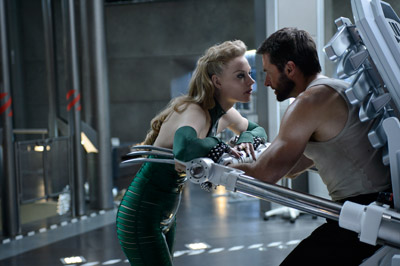 Production Notes
Production Notes
The Wolverine first emerged in 1974, when the character made his premiere appearance in the very last panel of an issue of The Incredible Hulk -- one that foreshadowed his joining the band of mutant heroes known as The X-Men. He would soon be world-renowned for his adamantium claws, his powers of self-healing and his primal 'berserker" rages – all of which would serve to forge The Wolverine into a superstar of the superhero realm.
In the 1980s, The Wolverine truly came into his own – in a four-issue miniseries created by 'X-Men" writer Chris Claremont and the legendary graphic artist Frank Miller ('The Dark Knight," 'Sin City"). In the series, the character makes a solo journey to Japan, only to be lured into a maelstrom of crime, betrayal and honour, in the midst of which he is forced to confront both his terrifying strengths and his undiscovered vulnerability. Trying to manoeuvre in a world he can barely understand, The Wolverine, for the first time, finds his inner sense of justice.
Long a favourite of fans of Wolverine, the arc had also been an inspiration for Oscar®-nominated actor Hugh Jackman, who has embodied the character in six blockbuster X-Men movies (and is currently before the cameras in a seventh film). Hugh Jackman saw in this untold part of the character's history a rare chance to dive even deeper beneath The Wolverine's indestructibility, and to illuminate his darkest aspects in a new way.
That desire got a boost when Hugh Jackman teamed up with James Mangold, who had previously turned the story of Johnny Cash into a riveting account of love and rebellion in Walk the Line, and re-jiggered the classic Western 3:10 to Yuma into a contemporary cat-and-mouse game set around mythic themes of friendship, duty and destiny. He was the right choice to bring a new view to The Wolverine, and to take the character outside the usual conventions of the X-Men storylines.
'Jim Mangold knows how to make a movie that is fun, has incredible action, and yet also delivers all the finer elements of character and storytelling," says Hugh Jackman. 'He pushed me to go deeper, angrier, heavier, more berserk in every way and in every take."
From the start, James Mangold wanted to break the mould of the comic book-based film. Explains the director: 'What interested me about The Wolverine was doing something quite different from the standard superhero movie, where it's about stopping a villain's diabolical plot. In this story, the action and suspense are built more on character, and are woven into a world that makes for a completely different kind of experience, one that you haven't seen before."
Though characters from Wolverine's past are brought into the mix and there are allusions to what he has gone through in his previous adventures, the focus is on an alternate track from the X-Men movies.
'When you're making a movie about a team of people like The X-Men, there's only so much you can get inside their heads," notes James Mangold. 'But this film is able to really get inside Logan, to explore who he is and the sources of his rage. He's someone who has been used by the Defense Department, by the government, by enemies, by villains, even by loved ones. And over time his anger at that has grown, only to be multiplied by his natural, pre-existing feral quality. Yet, within this story, he begins to he learn how this rage might be able to fuel and empower him."
Ultimately, James Mangold began to see the story more as an unflinching thriller about a man with a dark past searching for his future identity, than as something from a fantasy comic-book universe. 'I think one the things that will most surprise people about this film is how real it is, how much you completely lose yourself in this world, in the action, the drama and the romance," he comments.
James Mangold was especially drawn to the uncertain junction where Logan finds himself at the beginning of this story: he's been down many dark roads, feels he has lost or damaged nearly everything he loved, and is unsure if there is any path left to redemption. The one thing he has going for him is his immortality. But even that may be more of a curse than a blessing.
'One thing I find particularly interesting about Wolverine is his immortality, the fact that with his healing factor he can go on forever like a god, and because of that he also experiences the loneliness of a god. Even when Logan loses those he loves, he knows that he will keep going on," James Mangold observes. 'He's been going on for a century now, through wars and battles and deaths of his loved ones and he's come to a point of great weariness. It's a classic theme – the man who can live forever but suffers because of it. Logan is a damaged hero, and this story is very much about him looking to reclaim something he's lost in himself."
James Mangold embraced the opportunity to take Logan directly into the heart of present-day Japan, which is as full of sleek, high-tech modernity as it is rife with deep traditions and hidden codes of honour. 'This story takes Logan into a kind of fever dream of today's Japan, full of Yakuza, Ninja, Samurai, Industrialist crime, mystery and mysticism," the director explains.
The Japanese setting allowed James Mangold and Hugh Jackman to re-imagine Logan in a fresh guise: as a Rōnin. 'In feudal Japan, the Samurai belonged to a master, and a Rōnin is a Samurai who no longer has a master to serve. So, he is a kind of a warrior without a purpose, without a cause," James Mangold explains. 'Many of the people who made Logan feel part of a cause are now gone. So, he's essentially a lost man, capable of doing anything, with no mandate. That's an iconography that American Westerns and Samurai films share and now we're bringing a comic book character into it."
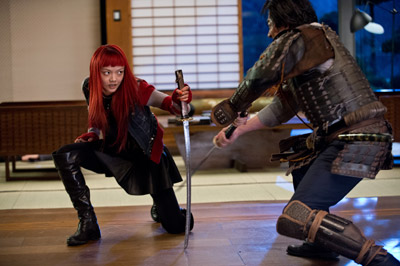 Juxtaposed with the beauty of Japan are intense action sequences, ranging from accelerating bullet trains to the towering menace of The Silver Samurai. But here, too, James Mangold wanted to explore beyond the usual boundaries. 'We were always thinking about pushing the envelope with the action and the visuals," he says, 'but doing so in a way that you never lose the sense that what is happening is very real."
Juxtaposed with the beauty of Japan are intense action sequences, ranging from accelerating bullet trains to the towering menace of The Silver Samurai. But here, too, James Mangold wanted to explore beyond the usual boundaries. 'We were always thinking about pushing the envelope with the action and the visuals," he says, 'but doing so in a way that you never lose the sense that what is happening is very real." The entire production team was excited to be doing something unusual with a character that has become so beloved. Joining Hugh Jackman as producers on the film are Lauren Shuler Donner, who has been a vital part of X-men movie history from the very beginning, and Hutch Parker, who worked together with Donner to support Mangold's vision.
'This really is the quintessential Wolverine story," sums up Hutch Parker. 'It takes him on a deep journey. It mines the essential conflicts within him. It challenges him, both physically and emotionally, in ways that we have never seen. It takes us into a Japan that is very real yet alien to us."
Hutch Parker sees James Mangold's approach as a strong fit with the material. 'James Mangold has built on what has come before in his own way," he concludes. 'He wanted to make this world viscerally real and was willing to not just show Wolverine's rage but to answer the questions of why."
Though this marks the sixth time that Hugh Jackman has donned the persona of Logan – the most times a single actor has ever played a comic book hero -- The Wolverine is like nothing that had come before. For one thing, as the film starts, Logan is unsure of what direction to turn as he heads to Japan.
'He's someone who has always marched to beat of his own drum but at the beginning of our movie he's probably more isolated than you've ever seen Wolverine," explains Hugh Jackman. 'He's disaffected with the world, because he was created as a weapon and he's rebelling against that – and he feels that he is a danger to society."
Hugh Jackman goes on: 'You will see Logan more vulnerable, more at risk, and more of a monster than you've ever seen him before. He's struggling with identity, he's struggling with his reason to exist, and now he faces the choice of whether to embrace his true nature or not."
Hugh Jackman especially enjoyed taking Logan into Japan, which he notes 'is like nowhere else on the planet," a place that both haunts and changes Wolverine the more he engages with it.
'The atmosphere of Japan seeps through the movie," Hugh Jackman observes. 'For Logan it has the effect of wiping clean all his normal ways of interacting with people and reading situations. He has to start fresh. Japan is a fairly insular society with a very strong sense of its own culture and history, so Logan is really a stranger in this strange new world. He learns about the Samurai code, the training and the honour system. But he's immediately distrustful of it, not dissimilar to when he first entered the world of X-Men. Yet, he watches and he adapts. He starts to gain respect for the idea of being a warrior, for the sense of service that they have. And he starts to become the better version of himself."
From the start, Hugh Jackman was committed to taking Wolverine to new levels of physicality. The meant throwing himself into the most intensive and disciplined preparation regime he has undergone yet, combining rigorous diet, hardcore physical training, and intensive martial arts instruction.
'I've always loved playing this character but I have always had this thing of -I wish I had gone a little bit further physically with him,'" Hugh Jackman confesses. 'This script gave me an opportunity to go further emotionally than I've been and I wanted to do the same physically. I started training and started a very strict diet far in advance since we had the preparation time. And I think the results have paid off because when I look at the screen, I see Wolverine there. I think it's important for him to be lean, to see veins, to be vascular yet very strong obviously. I've always wanted people to look at the screen and go, whoa."
Learning new fighting styles was also paramount to the performance. 'I have always portrayed Wolverine as a street fighter and a pub brawler. His style is not pretty, he doesn't want to hang around and jab at you, he just wants to take your head off in three seconds and move on. His fighting style is not studied in any way. But one of the great things about this story is that when he comes to Japan, he starts to really take that kind of discipline and training to heart."
Hugh Jackman did the same, working closely with the leading stunt team 87Eleven to hone a variety of ninjitsu and other Japanese martial skills. 'The team at 87Eleven were fantastic," he says. 'I was training every day and let me tell you, I thought the gym work was hard but training on the martial arts floor is ten times harder."
Seduction and Betrayal: Past and Present
Surrounding Logan in his journey to Japan is a cast of characters whose motives are initially unclear but whose codes of honour are new and intriguing to him. In casting the film, as with all the other elements of the production, James Mangold looked to underscore the film's grounding in realism.
To play the vital role of Shingen Yashida, the leading industrialist who is not only the leader of a vast criminal empire but the father of Wolverine's new love Mariko, he fittingly chose a man who is himself a legend of Japanese film. Taking the part is Hiroyuki Sanada, who started acting as a child in the 1960s and went on to become an action hero, an acclaimed dramatic actor, the first Japanese man to perform with the Royal Shakespeare Company, and the star of dozens of Japanese and Hollywood films including Twilight Samurai, Ring, The Last Samurai, Danny Boyle's Sunshine, Rush Hour 3 and Speed Racer.
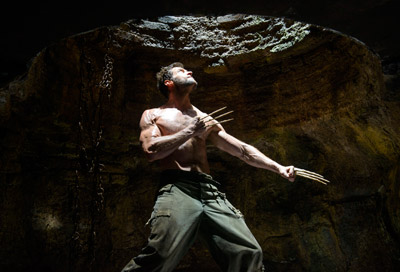 Hiroyuki Sanada's well-honed skills in the Samurai fighting style also benefited other cast members as he shared his broad knowledge of martial arts action, including with first-time actor Rila Fukushima, who plays Yukio. 'I had a sword fighting scene at the beginning of filming and Hiro helped me so much. I mean if he wasn't there, I can't really imagine like how I would have done it," says Fukushima. 'He's amazing to watch and we were all really honoured to work with him."
Hiroyuki Sanada's well-honed skills in the Samurai fighting style also benefited other cast members as he shared his broad knowledge of martial arts action, including with first-time actor Rila Fukushima, who plays Yukio. 'I had a sword fighting scene at the beginning of filming and Hiro helped me so much. I mean if he wasn't there, I can't really imagine like how I would have done it," says Fukushima. 'He's amazing to watch and we were all really honoured to work with him." Although The Wolverine takes place away from the X-Men team, there are key appearances from figures in Logan's past, including Jean Grey, the telekinetic mutant and Logan's lost love, portrayed once again by Famke Janssen.
Famke Janssen embraced the opportunity to return to the X-Men universe and, especially, the chance to reunite with Hugh Jackman. 'Hugh Jackman and I have a wonderful history playing these characters," says the actress. 'We've worked together on three previous movies, in which there was a flirtation between Logan and Jean, and I think a lot of -X-Men' fans had hoped to see them together again."
A bonus was the nature of their joint scenes in The Wolverine. 'Our scenes are dream-like, beautiful, intimate, and perhaps a little disturbing," Janssen hints.
'Jean Grey is central to this journey Logan is on to battle the demons of his past," adds Hutch Parker. 'Jean and Wolverine had a complex relationship, and now Jean is a kind of guide who challenges him. It really helps to connect the unique experience of this story to the rest of the X-Men mythology."
Logan's journey through Japan also involves two other powerful women, each of whom has her own light or dark fascination with him. Tao Okamoto plays out Mariko's complicated love story with Logan, and Rila Fukushima, takes on the role of the fiery, sword-wielding bodyguard Yukio. Both were cast from auditions that won over the filmmakers with their naturalism.
'Tao Okamoto and Rila Fukushima are both natural actresses and they're both amazing looking in their roles as well," says James Mangold. 'Both women are incredibly beautiful, and each has tremendously palpable energy, and yet they couldn't be more different."
Tao Okamoto was drawn to the background of her character as the daughter of a powerful industrialist who was never there for her, and has arranged a marriage for her to a man she does not love. 'Mariko could never be a normal woman," Tao Okamoto observes. 'But all along, she was hiding her dreams. At the start of the story, she is someone very desperate. Then she meets Logan, and she starts to realise what she wants in life, and she begins to change. That transformation was very interesting to me."
Hugh Jackman n was impressed with how organically Tao Okamoto took to the character. 'She has that ability to let the camera go deep within her. When Wolverine gets to Japan, he doesn't want to be involved with anyone or anything -- but in Tao Okamoto's performance you see how he could not help but be drawn into her vortex."
Tokyo native Rila Fukushima says it was Yukio's colourful intensity that intrigued her. 'What interested me were her physicality and her ruthless nature," she muses. 'I was really excited to have the chance to do such strong action sequences – but I also saw great potential for humour with her."
Rila Fukushima threw herself into the high spirit and trials of the role. 'It was an amazing, challenging journey for me," she says. 'I trained with our terrific stunt team, learned all the physical stuff, including sword work, kick-boxing and fighting, and also did lots of weight training. I'd never done anything like this before, but it was great fun."
Another powerful and complex woman is brought to life by Svetlana Khodchenkova, who takes on the green-eyed Viper, a cunning and treacherous mutant. Svetlana Khodchenkova, who hails from Russia, is best known in the West for her recent breakout role in the acclaimed spy story Tinker Tailor Soldier Spy, as the Soviet operative Irina.
Taking the role of Shingen Yashida's father, Lord Yashida, who tries to make a shocking bargain with Logan, is Japanese actor Haruhiko Yamanouchi -- who could not resist the larger-than-life character. 'Lord Yashida is such a big character he made me think of Shakespeare," he says.
Yamanouchi drew on the history and personalities of real Japanese industrialists to get to the heart of Yashida's ambition. 'He's one of the engines of the Japanese economy and I think such people have both a strong sense of responsibility and a strong identification with the destiny of Japan," he explains.
Rounding out the principal cast is American-based actor Will Yun Lee as the Black Hand ninja, Harada. Will Yun Lee, who is known for his roles on TNT's 'Witchblade" and as the villain in the James Bond film Die Another Day, was drawn to James Mangold's approach. 'I've always been a fan of this genre, but knowing James Mangold's movies, I knew he was going to bring an interesting twist to this," says Will Yun Lee. 'And then when I read the script, I loved the way Harada is written as such a mysterious character."
His character's twisting background as the illegitimate son of Shingen Yashida led Lee to the core of his character's ultimate dilemma. 'Harada was basically raised by Shingen Yashida and he later led what's called The Black Clan, a centuries old cadre of ninjas whose sole mission is to protect the House of Yashida," Will Yun Lee explains. 'But in the course of the movie, Harada realises that what is happening around him doesn't seem to line up with his warrior code. So he has to make some crucial decisions towards the end of the movie on whether or not he chooses to live by that coda.
To bring his fight scenes to life, Lee devoted himself to training. 'Having to learn skills that go beyond martial arts was my biggest challenge," he says, 'and they really put me through the ringer. I was training for three hours a day every day, but it paid off."
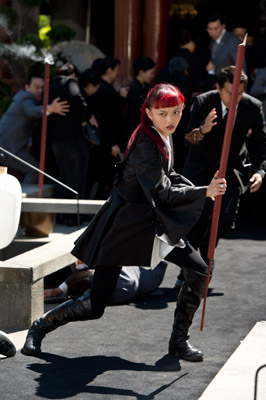 About the Production
About the Production
The heady atmosphere of present-day Japan –hyper-modern yet full of rituals and ghosts from the past – is central to the story of The Wolverine, and James Mangold was committed to shooting there right from the start. Ultimately, the film's ambitious 80-day shoot would journey between Japan and soundstages at the Fox Studios in Sydney, Australia.
'Japan is like no other country in the world. The culture, code and personality are unique. By shooting there, we were able to really get the vision of the landscapes, of the architecture," says the director. 'And we were also able to capture something not often seen in movies: rural Japan. We think of Japan mainly as Tokyo or Osaka, but there are some of the most beautiful wild lands and tropical islands in the hinterlands. Both the bustle of the city and the incredible Zen of these beautiful lush forests had a huge effect on us. The chance to be in these places really inspired the filmmaking."
To capture it all, James Mangold worked with director of photography Ross Emery, production designer François Audouy and costume designer Isis Mussenden – who each contributed to a design that mixes together elements of noir cinema, Japanese folklore, graphic novel iconography and intense personal drama.
Ross Emery worked closely with James Mangold to give The Wolverine a look that is grounded and realistic, yet pushes reality to its bleeding edges. 'The style of the film is really driven by the strength of the characters," says Ross Emery. 'And there are also so many real yet dramatic environments these characters move through: we have Tokyo at night, which is very much like a Blade Runner atmosphere and then we have the countryside which is a completely different kind of texture."
Shooting with the Arri Alexa digital cameras using anamorphic lenses, Ross Emery attained maximum flexibility and cinematic crispness – bringing the audience right into the grit and sweat of the action. 'The combination of the camera and lenses really gave us that classic film look that Jim loves," says Ross Emery.
Production designer Francois Audouy further forged Logan's view of Japan with intricate set designs, which reflect both Logan's inner turmoil and his outsider's vision of Japanese culture. 'James Mangold had some really interesting early ideas about the design for the movie," recalls Francois Audouy. 'He always described it as -a fever dream of Japan' – and he wanted us to create a kind of dreamy, stylised road trip for Logan. The idea was to put him inside a slightly magical, heightened reality, but one that is grounded and believable."
Francois Audouy began early on by diving into the history of Japan – its enduring traditions, meticulous art forms and unique architecture. 'We fed all that research to James Mangold. Then he folded all those visual ideas right into the script," he explains. 'It was a very collaborative and blended creative process."
Later, Francois Audouy travelled numerous times to Japan to scout locations. 'We knew we'd only have a limited amount of time to shoot in Japan so we really wanted to take advantage of those places we could never recreate on a backlot," he notes. 'As Logan becomes completely immersed in this foreign world, we wanted the audience to be right there with him."
Throughout François Audouy's designs, colour was key. 'We plotted out the colour all the way through the film," he says. 'When the story starts off in Canada, it's subdued and organic. Then there's this big visual pop that happens when we get to Japan with an explosion of texture and all the graphics of Tokyo at night. Then when we go into the Yashida compound, where it's beautiful and serene and sophisticated, and really designed to play against the Silver Samurai."
Several of the film's largest sets were later built on soundstages or on location in Australia, including portions of the opulent Yashida compound with its bonsai trees and koi ponds and the high-tech Yashida laboratory. One of the most complex creations is the Ice Village, which François Audouy painstakingly recreated in Homebush, Australia based on three mountain villages he scouted in Nagano, Japan. 'We used very accurate architecture from the mountain villages, and it was a lot of fun to build," says the designer.
On this film, Francois Audouy also was involved in the creation of Wolverine's nemesis, the Silver Samurai, whose pose-able mechanical suit was built from the ground up. 'It was completely detailed down to every single bolt head and wire -- and it was built by an incredibly talented crew over a span of almost five months here in Sydney," he explains.
Francois Audouy continues: 'The suit was made up of over 600 parts, each separately designed and modelled in a computer. It was a very ambitious build – but everyone's jaws hit the ground when we unveiled it in the middle of the lab. When you read it on the page you think, -Ah, of course it'll be CG.' But it was pretty cool that we got the opportunity to build a real 13-foot robot that kicks ass."
Mutant vs. Samurai
James Mangold wanted The Wolverine to feature the most realistic action he has yet been seen in. That's why he brought in 2nd Unit Director and stunt coordinator David M. Leitch and his team from 87Eleven to choreograph the action and train the cast. 'One thing that's different about this film is that 90 percent of the action has been done entirely by our actors," notes James Mangold. 'We wanted to bring a kind of down-to-earth action to this, because I think there is something amazing and visceral about fighting battles on that person-to-person level."
Long before production began, David Leitch began training with each cast member, and honing every sword flick, high kick and adamantium slash for the film's ambitious battle sequences.
'One thing we really tried to do in this film was make sure that the Japanese aesthetic of ninjitsu and martial arts comes out, but we also dashed it up with a flavour of fantasy," says David Leitch. 'There are gymnastics and acrobatics that you wouldn't expect, and at the same time, the clean lines and the minimalism of the Samurai movie comes through in the choreography. We tried to come up with something fun, cool and different."
Leitch was especially excited to reunite with Hugh Jackman, with whom he worked on Van Helsing and X-Men Origins: Wolverine. 'Hugh Jackman is one of the most physically talented actors in the business," he comments. 'He learns choreography really easily. You can do long pieces of uncut action because he can pull it off; and you can change things on the day because he can pick it up immediately, and that's all very rare for actors. He's as good as any stunt man that we have in our company in terms of memorising choreography. What's even better is that he brings the emotional weight of the character to that action, and that's what makes him so compelling."
The Costumes
The Japanese world that beckons to Logan in The Wolverine was an exciting challenge for costume designer Isis Mussenden – who worked very closely both with James Mangold and François Audouy to craft the film's disorienting but visceral mood. Mussenden was excited by the chance to journey into Japan, past and present, traditional and post-modern.
'Researching Japanese culture, Japanese traditions, Japanese clothing, kimono, yukata, Ninjas, Aikido, Kendo, Yakuza, street looks, Harajuku – all of that opened up a whole new world," she says.
It would also spark a whole new approach to Wolverine himself. 'Logan is not the same person that he was in the previous stories, so we really ran with that idea to give him a fresh look, appropriate for this story," explains Isis Mussenden. 'In Japan, he's a real fish out of water."
Although Logan might only have five or so outfits, Isis Mussenden's team made close to 100 individual pieces for Hugh Jackman to take him through all his primal, fabric-destroying adventures. 'Hugh Jackman had to constantly change outfits to accommodate different levels of fighting, for harnesses, to deal with bullet holes and slash marks," she says.
While Logan appears mainly in earthy, raw 'harvest colours," the women he encounters in Japan don bolder and more mysterious palettes. 'Yukio is in red. Viper's obviously green which is based on her look in the graphic novels, and Mariko is in a serene blue, since she is our ingénue," Isis Mussenden notes. 'There is also a lot of black in the film, as there is a lot of black in the Japanese palette, but that is then set against intensely beautiful textures and colours."
Isis Mussenden notes that she had to learn the intricate rules of wearing kimonos, the rituals of Japanese funerals and the traditions of Ninjas. But she found it especially fun to work with Viper's latex suits and Yukio's Japanese manga-inspired look. 'Viper's costume at the end is a big, showy costume and Yukio is a hip, cool kind of character and it was very satisfying to design for that," she says. 'With Yukio, we were inspired by the Wolverine graphic novels, by lots of manga girls, and by Rila Fukushima, who looks beautiful, tough and hot, all mixed into one."
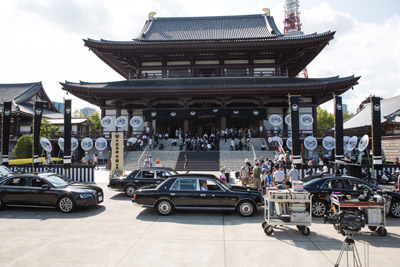 Producer Hutch Parker expects that this new world for Wolverine will be equally compelling to audiences. 'From the production design to the costumes to the locations, Jim Mangold and his team have steeped this story in the kind of detail that makes it all come alive," he comments. 'The whole design creates a wonderful interplay with the Wolverine's psychological journey."
Producer Hutch Parker expects that this new world for Wolverine will be equally compelling to audiences. 'From the production design to the costumes to the locations, Jim Mangold and his team have steeped this story in the kind of detail that makes it all come alive," he comments. 'The whole design creates a wonderful interplay with the Wolverine's psychological journey."
A distinctive journey that brings audiences more directly into Wolverine's experience is exactly what James Mangold hopes to have created. 'I hope audiences will find that they have landed, like Logan, in a world they've never seen, and become completely immersed in something new and exciting," he sums up.
The Wolverine
Release Date: Thursday, July 25th, 2013
MORE
- Mission: Impossible Fallout
- Glenn Close The Wife
- Allison Chhorn Stanley's Mouth Interview
- Benicio Del Toro Sicario: Day of the Soldado
- Dame Judi Dench Tea With The Dames
- Sandra Bullock Ocean's 8
- Chris Pratt Jurassic World: Fallen Kingdom
- Claudia Sangiorgi Dalimore and Michelle Grace...
- Rachel McAdams Disobedience Interview
- Sebastián Lelio and Alessandro Nivola...
- Perri Cummings Trench Interview



